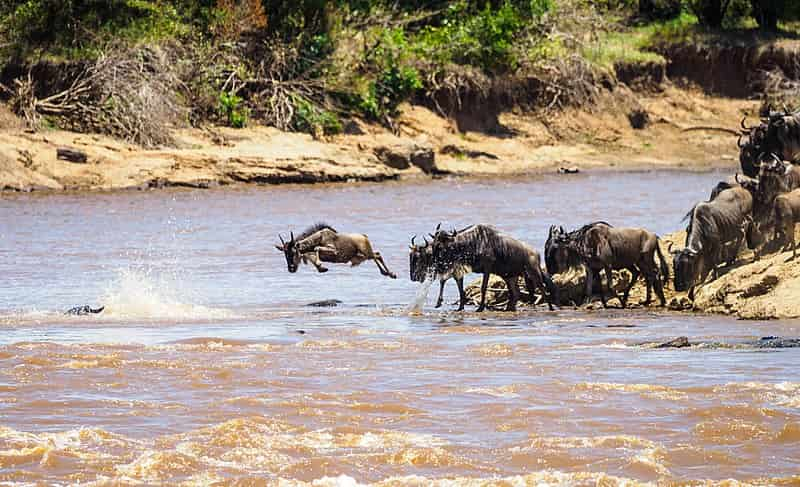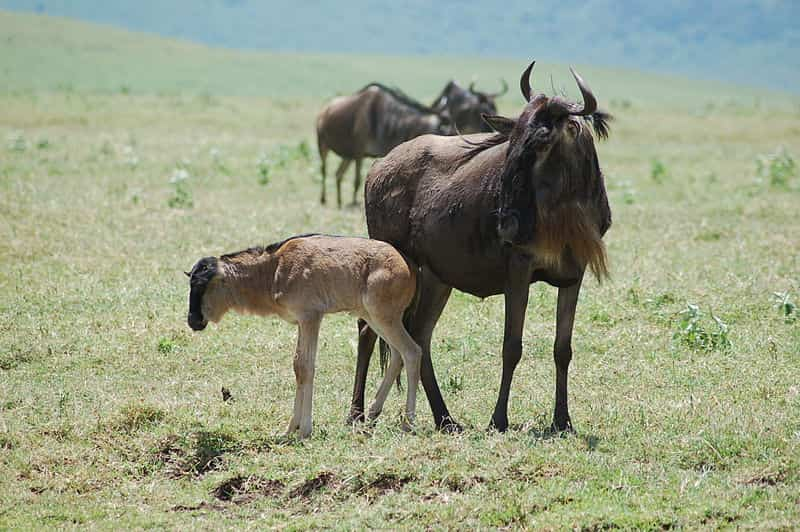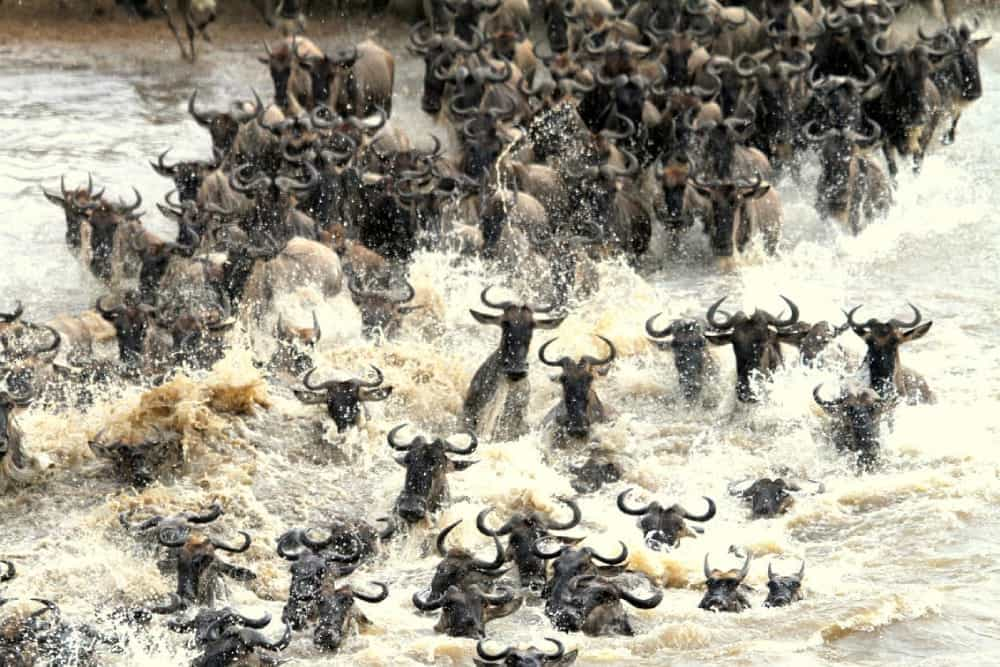Do you know the greatest Wildebeest migration happens in Kenya and Tanzania in Africa? You have probably heard from documentaries or even the Lion King movie.
Tourists worldwide visit Kenya and Tanzania to witness the phenomenal experience. As a black family or couple, you can go on vacation to either of the two African nations and see the power of nature.
Become an insider. Subscribe to our newsletter for more top trending stories like this!
It’s incredible how the wildebeest move in large numbers of more than 1.5 million, defying all odds of the mara river with predators like Nile crocodiles, lions, and cheetahs waiting to grab them.
1. The Migration is An All-Year-Round Event
Many think that the wildebeest phenomenon happens once a year. But it is a continuous cycle occurring the whole year in the African continent. The difference is that the Mara River crossing to Serengeti is the most intense and dramatic. It’s acknowledged as one of the “Seven Wonders of the Natural World.”
If you wish to witness most of the Serengeti’s northern river crossings, go between August and October. In the birthing season, which lasts from January to March, you could be in luck and spot the wildebeest in Southern Serengeti. But the herds can also be seen throughout the rest of the year, though they are usually more scattered.
People Also Read: 11 Best African Countries to Visit
2. About 1.5 Million Wild Animals Migrate Every Year
The search for pasture triggers the movement of the many wildebeest between Tanzania and Kenya. Thus by moving with each season, the wildebeest ensure their access to food is limitless. And as they move, nature heals itself. The rotational grazing allows grass to grow back.
3. Survival Is Dependent on the High Numbers
Crossing the river is a matter of life and death for the animals. They can’t stay on one end because lush vegetation is on the other. So they make the mighty dive with their calves into the crocodile-infested river.
Predators kill about 6250 animals every time they cross the mara river. Some, like the hyenas and lions, are skilled hunters and carnivores which target the most vulnerable- the calves. And so the wildebeest numbers are what ensure the survival of their kind. Many will drown, but many will also survive.
4. Biodiversity Depends on Migration
The dead animals rot over some weeks. As this happens, fish get 50% of their food and small animals like the mongoose feed on the maggots.
What remains after the rot is bones. As they disintegrate, they become a crucial source of phosphorous for the river. And this feeds insects, algae, and fish.
Again, the nutrients flow downstream or are picked by scavengers to the dry lands, which then support the thriving of the ecosystem in the river basin.
People Also Read: Escape to Zimbabwe: The Top 10 Tourist Destinations in Zimbabwe
5. Crossing the Mara River Is Dangerous

Many wildebeest may drown if they cross when the water level is too high or swift. Additionally, the crossing points have predators waiting to pounce on the animals as they make the high-risk crossing.
Become an insider. Subscribe to our newsletter for more top trending stories like this!
The herd strength gives the wildebeest limited options but to take a life-threatening leap into the crocodile-infested Mara waters, dying in huge numbers.
6. 400,000 Calves Are Born

The sheer number of births is incredible. 400,000 wildebeest calves are born within four weeks. You might think they’re vulnerable. Yes, they are, to some extent. But the thing is that they run immediately after they’re born.
The calves stay beside and instinctively follow their mothers from birth, especially after being able to move. When the adult wildebeest moves, so does the calf, and it often stays connected through touch.
#7. Other Animals Migrate
Wildebeest don’t cross alone. About 200,000 zebras, impalas, gazelles, and elands are in tow. They move between the impressive Maasai Mara national reserve Kenya and Tanzania Serengeti national park.
And where is the best place to see the wildebeest migration?
- The Mara River for the spectacular annual migration in Maasai Mara
- The Plains of the Mara River, where there’s lush vegetation
- Ndutu plains that extend to the fenceless section of the Serengeti National Park
People Also Read: The Top 5 Must Have Experiences in Cameroon
#8. The Migration Is Unpredictable
In East Africa, April and May are associated with long-period rainfall. As a consequence, vegetation and trees bloom in the Serengeti plains. Thus, the wildebeest and Zebras start migrating towards the grass-filled central Serengeti. This is the typical scenario.
But sometimes, things don’t happen the usual way. Animals don’t have weather instruments to predict when it will rain. Or when they should cross. So the rains can come early or late. And because of this, some of the herd may turn back, others swim across immediately, and some hang around and graze.
Places to visit while in the Mara Game Reserve and the Serengeti National Park.
- Cultural and theme tours
- Nature and wildlife tours
- Sporting events
- Sporting tours
- Air and hotel transfers
If you’re planning a black travel trip to East Africa, the greatest wildebeest migration can be a unique event to experience. But if you feel the aggression and deaths of the animals are disturbing, you can always tour during the other seasons. And you can watch at less dramatic crossing points.
Spotcovery offers unique and fresh daily content on Black culture, lifestyle, and experiences. We talk about everything black, black people, black-owned and black-owned businesses. We also deliver authentic and relevant content that will inform, inspire and empower you! The future of black media is a critical piece of the black experience of today! Our primary audience includes African American, African, Afro-Caribbean and people of African heritage. Black culture is for the culture!
Become an insider. Subscribe to our newsletter for more top trending stories like this!





